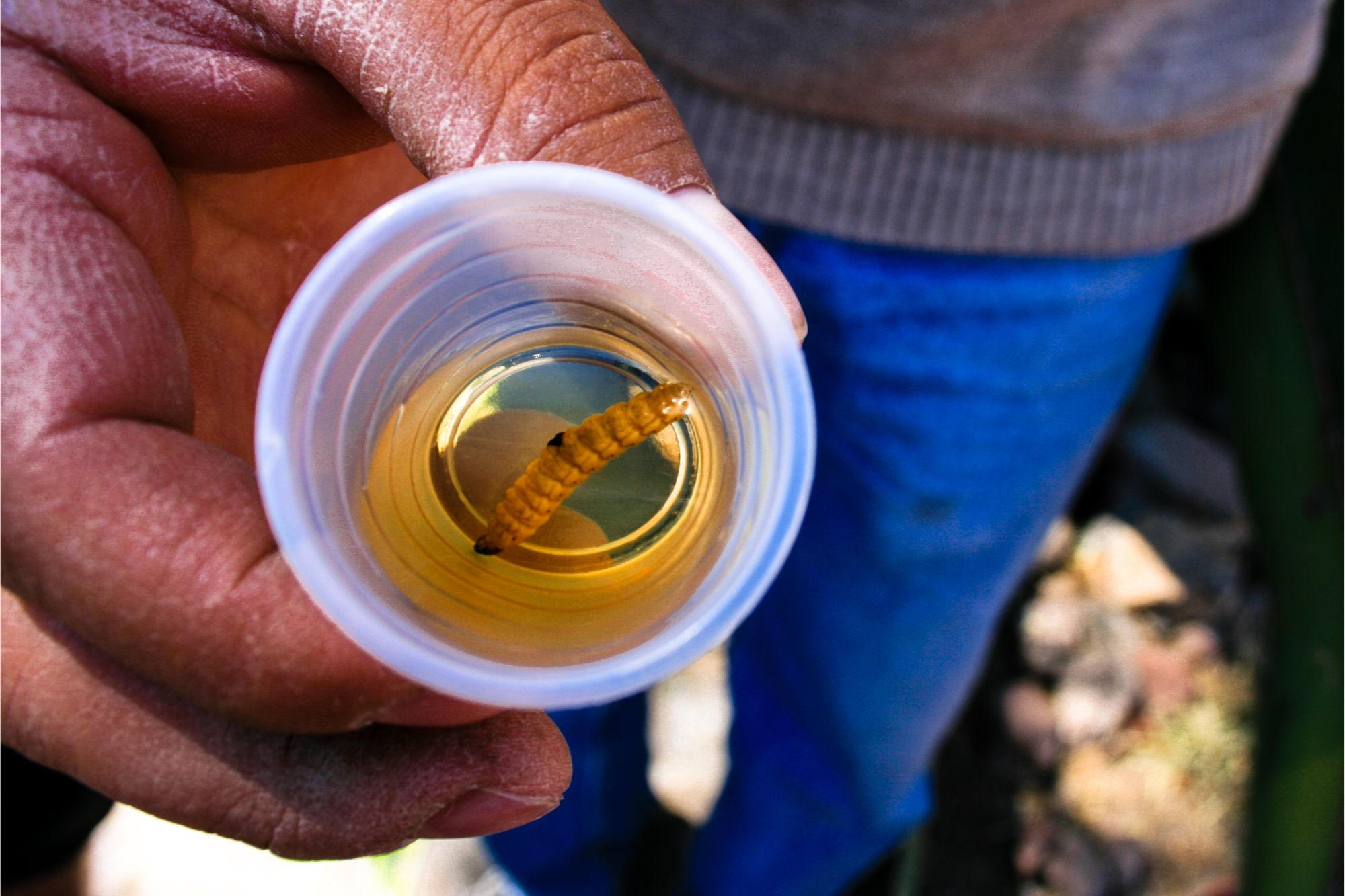

Studiu publicat în Viața și mediul PeerJ Ei au analizat tipurile de omizi găsite în sticlele de Mezcal, o băutură alcoolică distilata făcută din agave. În mod oarecum neașteptat, studiul a constatat că toate omizile provin dintr-o singură specie de molii, C. redtenbacheriEste una dintre cele mai comune insecte comestibile din Mexic.
Mezcalul este un spirt distilat produs din seva gătită și fermentată a plantelor de cactus. Majoritatea băuturilor mezcal, inclusiv toate tipurile de tequila, sunt comercializate ca un distilat pur, dar câteva conțin un adaos neașteptat: viermi.
Numiți gusanos de maguey în spaniolă, care se traduce prin viermi agave, acești însoțitori ciudați nu sunt cu adevărat viermi, ci mai degrabă un tip de larve de insecte. Practica încorporării acestor larve în mezcal este relativ recentă, deoarece producția de mezcal are o istorie bogată care datează de la primii coloniști spanioli din Mexic. Cu toate acestea, viermii nu au fost introduși pentru prima dată în băutură până în anii 1940.
De atunci, gusanos au contribuit la creșterea popularității mezcalului, dar identitatea lor a rămas evazivă. Nu există un consens cu privire la tipul de omidă folosită pentru mezcal sau chiar dacă a aparținut unuia sau mai multor[{” attribute=””>species. They’ve been variously ascribed to moths, butterflies, and even a type of weevil.
“It’s relatively easy to broadly determine the kind of larva based on the shape of the head, but their identity has never been confirmed,” said Akito Kawahara, curator at the Florida Museum’s McGuire Center for Lepidoptera and Biodiversity. “This is probably because most biologists are not looking inside mezcal bottles.”

Mezcal is made from the boiled and distilled sap of various agave species. Credit: Charles Lemaire
In a new study, recently published in the journal PeerJ Life & Environment, Kawahara and his colleagues decided to pin down the identity of the mezcal gusanos. In 2022, they traveled to Oaxaca Mexico, which has been the center of mezcal production for hundreds of years. There, they visited distilleries and obtained as many different brands as they could find to ensure a diverse sampling of larvae.
There were very few distinguishing features that could be used to assign the specimens to a particular group or species; fortunately, mezcal makes an excellent preservative, preventing the decay of the larvae and their internal packets of DNA. The researchers successfully extracted and analyzed genetic material from 18 specimens, but the results they got back were unexpected.

Mezcal is a type of distilled alcoholic beverage that is made from the agave plant, which is native to Mexico. It is similar to tequila but is made from a wider variety of agave plants and is typically produced using traditional methods such as underground pit ovens and stone mills.
Since gusanos de maguey aren’t commercially farmed, the authors suspected that mezcal worms would likely be sourced from several unrelated species. This included a type of butterfly called the tequila giant skipper (Aegiale hesperiaris), which lays its eggs on agave plants. Their large, milky-white caterpillars parasitize several agave species, boring tunnels through the rigid, succulent leaves. The eponymous common name, combined with their white larvae — which match the color of many gusanos de maguey — marked them out as a primary suspect.
Instead, the DNA unequivocally identified all 18 specimens as the caterpillars of agave redworm moths (Comadia redtenbacheri), another type of agave parasite with rosy-hued larvae. The researchers suspect that accounts of white gusanos de maguey come from caterpillars that have been stored in alcohol for long amounts of time and have consequently leached their color.
The results add a sobering note to what is currently a boom in the international popularity of mezcal. According to a report by Straits Research, an independent analytical firm, the sale of mezcal is expected to increase by 22% in the next decade, reaching $2.1 billion in profits by 2030, riding a growing wave of interest in artisanal, ethically manufactured products.
Unlike tequila, which is mass-produced in industrial autoclaves, mezcal production continues to rely on small-scale facilities in Mexico’s arid countryside. Farmers roast the barrel-shaped agave cores in open fire pits or specialized kilns, then chop and pulverize the crisp stumps for fermentation and small-batch distribution. It’s unclear whether all mezcal distilleries and landowners will be able to sustainably scale up production to meet demand.
The fate of agave redworm moths is also uncertain. Maguey worms have been harvested as a delicacy for centuries, beginning with the Aztecs. But demand for the larva in Mexican culinary establishments has also seen an increase in recent years, to the extent that wild populations of these caterpillars are considered at risk of overharvesting.
“Agave worms are still fairly common, but the impact of mezcal becoming popular can have long-term negative effects on local populations because they are harvested in the wild,” Kawahara said.
Red agave caterpillars burrow deep into the core of their host plants, and collecting them often kills the agave. For production to scale with the growing market, it’s possible local harvesters may need to actively grow caterpillars on agave farms or find ways to produce them outside of their host plants.
Reference: “Mezcal worm in a bottle: DNA evidence suggests a single moth species” by Akito Y. Kawahara, Jose I. Martinez, David Plotkin, Amanda Markee, Violet Butterwort, Christian D. Couch and Emmanuel F.A. Toussaint, 8 March 2023, PeerJ.
DOI: 10.7717/peerj.14948

„Mândru pasionat al rețelelor sociale. Savant web fără scuze. Guru al internetului. Pasionat de muzică de-o viață. Specialist în călătorii.”





More Stories
Simulările pe supercomputer dezvăluie natura turbulenței în discurile de acumulare a găurilor negre
Trăiește cu anxietate: sfaturi de specialitate despre cum să accepti o afecțiune de sănătate mintală
Noile cercetări asupra unei falii masive de tracțiune sugerează că următorul cutremur mare ar putea fi iminent